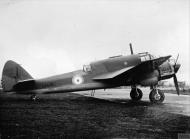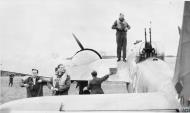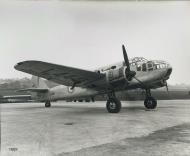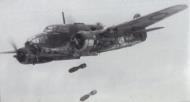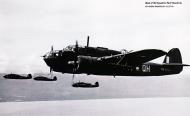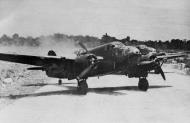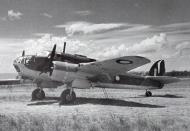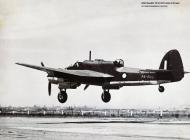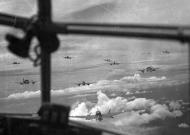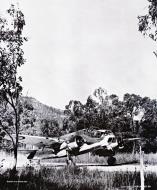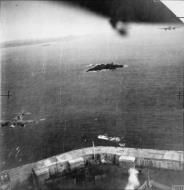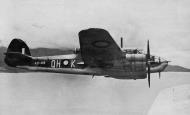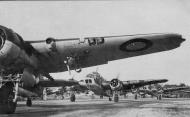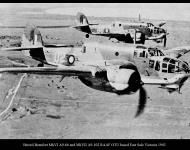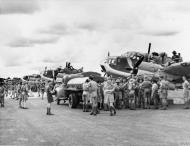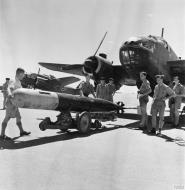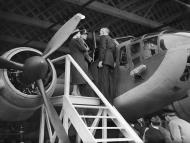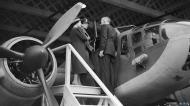Bristol Beaufort photographs
Bristol Beaufort MkVIM RAAF 8Sqn taxing for mission against Japanese troops 1944
Beauforts from No. 8 Squadron. Note that bombs beneath wings are fitted with long protruding rod which caused bombs to explode above the ground to increase their effectiveness against enemy troop concentration. (Australian War Memorial).
Bristol Beaufort MkVIM RAAF 1ARDU A9-200 Laverton Victoria 1944
Beaufort VIM, A9-200, at No. 1 A.R.D.U. (Aircraft Research and Development Unit) Laverton, in 1944. Note U.S. Mk. XIM torpedo slung beneath the fuselage.
Bristol Beaufort MkVI A9-66 and MkVII A9-102 RAAF OTU based East Sale Victoria 1943
A9-66, a Beaufort VI, and A9-102, a Beaufort VII, from No. 1 O.T.U. based at East Sale, Victoria, in 1943.
Bristol Beaufort MkVIM RAAF 1OTU A9-292 laning accident East Sale Victoria 1944
Beaufort VIM, A9-292, from No. 1 O.T.U. after a prang at East Sale, Victoria, in 1944.
Bristol Beaufort MkVIM RAAF 7Sqn KTL A9-124 Ross River Queensland 1944 AWM 01
Beaufort VII, A9-124, from No. 7 Squadron at Ross River, Qld (Queensland).
Bristol Beaufort MkVIM RAAF 15Sqn DDW A9-500 Tadji New Guinea 1944 AWM 01
DD-W, the 500th Australian-built Beaufort, serving with No. 15 Squadron at Tadji, New Guinea, in 1944. (Australian War Memorial).
Bristol Beaufort MkVIM RAAF 100Sqn QHK A9-418 off the coast of New Britain 1945 AWM 01
A9-418, a Beaufort VIM from No. 100 Squadron, off the coast of New Britain in 1945.(Australian War Memorial).
Artwork Bristol Beaufighter MkX RAF 144Sqn N LX784 Tunisia 1943
Profile Source: Flugzeug Classic 2013-02 144 Sqn was briefly posted to 328 Wing in the Mediterranean theatre. LX784 was shot down while attacking an Me 323 a few days before the squadron returned to the UK. As there is no photo of LX784, this profile was based on similar aircraft of the period. 144 Squadron, a Coastal Command unit, upgraded from the Beaufighter Mk.VIC to the TF Mk.X in May 1943. In June 1943 a detachment was sent from their base in Tain, Scotland to Protville II, Tunisia where they joined 39 and 47 Squadrons to form 328 Wing. In late July 1943, having been in Tunisia for barely two months, 144 Squadron returned to Tain. That August they re-equipped with new Beaufighter Mk. Xs.
Bristol Beaufort MkII RAF 39Sqn Flying Officer A O S Jepson Fayid, Egypt AWM 01
Aircrews of No. 39 Squadron RAF gather round Flying Officer A O S Jepson in front of his Bristol Beaufort Mark II as he recounts his part in the Squadron's attack on the Italian Battle Fleet on 15 June 1942, for the benefit of the press cameras at Fayid, Egypt. A force of 12 Beauforts set out from LG 05 near Sidi Barrani to attack the Fleet, but was soon reduced to five following an attack off Derna by German fighters. The remainder attacked two battleships, and a further three aircraft were badly damaged in the process before the survivors flew on to Malta. Although strikes on the warships were claimed, the Italian Fleet was undamaged, except for one hit on the battleship LITTORIO with a 500-lb bomb dropped by aircraft of the USAAF 'Halpro' Detachment which also participated in the attacks. Jepson and the survivors flew to Fayid four days later to attend a press day with members of the 'Halpro' Force.
Bristol Beaufort MkI RAF 217Sqn MWS St Eval Cornwall Jan 1942 (IWM) 01
Bristol Beaufort I N102,'MW-S' of No 217 Squadron, Royal Air Force readies for take off from St Eval, Cornwall as the ground crew pull the chocks from in front of its wheels. January 1942. Beaufort Mark I, L9878 'MW-R', of No.217 Squadron RAF based at St Eval, Cornwall, in flight.
Bristol Beaufort MkI RAF 217Sqn MWE N1173 St Eval Cornwall Jan 1942 (IWM) 01
Bristol Beaufort MkI RAF 217Sqn MWB AW242 St Eval Cornwall Jan 1942 (IWM) 01
Bristol Beauforts N1173 'MW-E' and AW242 'MW-B' of 217 Squadron, Royal Air Force making a low pass along the Cornish coastline near St Eval.
Bristol Beaufort MkI RAF 13Sqn Y N6519 based at Wadi Natrum Egypt 1941 0A
Bristol Beaufort Warpaint Page 19
Bristol Beaufort MkIA RAF 39Sqn V DE111 Gianaclis Egypt 1942 0A
Bristol Beaufort Warpaint Page 19
Bristol Beaufort MkIIA RAF 39Sqn G DD896 torpedo bomber based at RAF Luqa in Malta Nov 1942 0A
Bristol Beaufort Warpaint Page 19
Bristol Beaufort MkIA RAF 217Sqn MWT L9965 Mediterranean 1942 0A
Bristol Beaufort Warpaint Page 19
Bristol Beaufort MkIA RAF Middle East Check and Conversion Unit CCU 35 EK979 Bilbeis Egypt July 1944 0A
Bristol Beaufort MkI SAAF 16Sqn R N1011 Ivato Madagascar Oct 1942 0A
Bristol Beaufort Warpaint Page 19
Bristol Beaufort MkI RAF 415Sqn GXS L9802 Thorney Island Nov 1941 0A
Bristol Beaufort Warpaint Page 4
Bristol Beaufort MkI RAF 5OTU L2 X8931 Long Kesh Northern Ireland 1942 0A
Bristol Beaufort Warpaint Page 4
Beaufort MkI RAF 39Sqn L4502 at LG 86 Egypt IWM CM3148
A party of war correspondents look over Bristol Beaufort Mark I, L4502, of No. 39 Squadron RAF, probably at LG 86, Egypt, which was the unit's base from December 1941 to April 1942.
Imperial War Museum IWM CM 3148 https://www.iwm.org.uk/collections/item/object/205208945
Bristol Beaufort MkV RAAF at Kallang Singapore IWM KF106
RAF personnel inspect six Australian-built Bristol Beaufort Mark Vs, shortly after their arrival at Kallang, Singapore. The aircraft were intended for the re-equipment of No. 100 Squadron RAF but, as they were unarmed and their crews possessed no operational training, five were returned to Australia, while the sixth was employed on photographic-reconnaissance duties.
Imperial War Museum IWM KF 106 https://www.iwm.org.uk/collections/item/object/205209543
Bristol Beaufort MkII RAF 39Sqn at Fayid Egypt IWM CM2972
Aircrews of No. 39 Squadron RAF gather round Flying Officer A O S Jepson in front of his Bristol Beaufort Mark II as he recounts his part in the Squadron's attack on the Italian Battle Fleet on 15 June 1942, for the benefit of the press cameras at Fayid, Egypt. A force of 12 Beauforts set out from LG 05 near Sidi Barrani to attack the Fleet, but was soon reduced to five following an attack off Derna by German fighters. The remainder attacked two battleships, and a further three aircraft were badly damaged in the process before the survivors flew on to Malta. Although strikes on the warships were claimed, the Italian Fleet was undamaged, except for one hit on the battleship LITTORIO with a 500-lb bomb dropped by aircraft of the USAAF 'Halpro' Detachment which also participated in the attacks. Jepson and the survivors flew to Fayid four days later to attend a press day with members of the 'Halpro' Force.
Imperial War Museum IWM CM 2972 https://www.iwm.org.uk/collections/item/object/205208935
Beaufort MkI RAAF 22Sqn OAA AW203 anti-shipping from Thorney Island Hampshire IWM HU93027
Part of a large formation ('Balbo') of Bristol Beaufort Mark Is No. 22 Squadron RAF in flight off the English coast after taking off from Thorney Island, Hampshire. Photographed from the aircraft flown by the Squadron Commanding Officer, Wing Commander J C Mayhew. Nearest aircraft is AW203, 'OA-A'.
Imperial War Museum IWM HU 93027 https://www.iwm.org.uk/collections/item/object/205023371
Bristol Beaufort II RAF 39Sqn at Luqa Malta Jun 1943 IWM TR1072
Resting in blast-wall protected Dispersal Point 125 at Luqa, a Bristol Beaufort Mark II of No 39 Squadron, Royal Air Force is attended to by ground crew.
Imperial War Museum IWM TR 10723 https://www.iwm.org.uk/collections/item/object/205188647
Beaufort I RAF 22Sqn OAJ L4461 at North Coates Lincolnshire IWM CH637
Air gunners at their positions on board a Beaufort Mark I, L4461 OA-J, of No. 22 Squadron RAF at North Coates, Lincolnshire. One gunner occupies the Bristol Mark IV turret, mounting a single .303 Vickers K-type gas-operated machine gun. For added protection against beam attacks, 22 Squadron has installed another K gun, mounted in the port entry hatch.
Imperial War Museum IWM CH 637 https://www.iwm.org.uk/collections/item/object/205208658
Bristol Beaufort I RAF 22Sqn OAH L4449 based at North Coates Lincolnshire IWM CH639
Aircrew of No. 22 Squadron RAF walking away from their Bristol Beaufort Mark Is after a mission, at North Coates, Lincolnshire.
Imperial War Museum IWM CH 639 https://www.iwm.org.uk/collections/item/object/205208659
Beaufort IV RAF 105Sqn GBJ Z5899 at Watton Norfolk IWM CH17171
Bristol Blenheim Mark IV, Z5899 'GB-J', of No. 105 Squadron RAF based at Watton, Norfolk, about to touch down on the main runway at Attlebridge, Norfolk, during an Army Co operation exercise.
Imperial War Museum IWM CH 17171 https://www.iwm.org.uk/collections/item/object/205212750
Bristol Beaufort I RAF 22Sqn OAH L4449 based at North Coates Lincolnshire IWM CH639
Aircrew of No. 22 Squadron RAF walking away from their Bristol Beaufort Mark Is after a mission, at North Coates, Lincolnshire.
Imperial War Museum IWM CH 639 https://www.iwm.org.uk/collections/item/object/205208659
Bristol Beaufort I RAF 22Sqn OAF W6537 based at St Eval Dec 1941 IWM CH17131
Beaufort I W6537/OA-F of No 22 Squadron starting up at St Eval, December 1941. The accumulator trolley in the foreground supplied the necessary electrical power to the aircraft and was disconnected once the engines were running. Unlike other Beaufort squadrons, No 22 fitted a Vickers 'K' gun in the nose compartment of its aircraft, to be used for flak-suppression during low-level attacks.
Imperial War Museum IWM CH 17131 https://www.iwm.org.uk/collections/item/object/205218926
Bristol Beaufort I RAF 22Sqn OAF L9891 based at North Coates Lincolnshire 1941 IWM CH646
Bristol Beaufort Mark Is of No. 22 Squadron RAF taxy to their dispersal points at North Coates, Lincolnshire after a mission.
Imperial War Museum IWM CH 646 https://www.iwm.org.uk/collections/item/object/205208660
Bristol Beaufort I RAF 22Sqn OAD and OAP L9891 based at Thorney Island Hampshire IWM HU93029
Two Bristol Beaufort Mark Is of No. 22 Squadron RAF based at Thorney Island, Hampshire, heading for the Dutch Coast on a 'Rover' patrol, carrying Mark XII aerial torpedos.
Imperial War Museum IWM HU 93029 https://www.iwm.org.uk/collections/item/object/205211525
Bristol Beaufort I RAF 22Sqn OAW L4516 based at North Coates Lincolnshire IWM HU93029
Mark XI aerial torpedoes being taken out on trolleys towards a Bristol Beaufort Mark I, L4516 'OA-W', of No. 22 Squadron RAF at North Coates, Lincolnshire. Shortly after this photograph was taken, L4516 was destroyed when it stalled after a night take-off from North Coates and hit the ground near Marshfield, detonating the mine it was carrying.
Imperial War Museum IWM CH 1851 https://www.iwm.org.uk/collections/item/object/205210000
Bristol Beaufort I RAF 22Sqn OAH L4449 OAF L9891 and OAJ L4461 at North Coates Lincolnshire IWM CH644
Beaufort Mark Is, L4449 OA-H, L9891 OA-F and L4461 OA-J, of No. 22 Squadron RAF, lined up at North Coates, Lincolnshire.
Imperial War Museum IWM CH 644 https://www.iwm.org.uk/collections/item/object/205126765
Bristol Blenheim IV RAF 110Sqn VEA R3741 at Wyton Huntingdonshire IWM CH776
Percival Q.6 ?Petrel?, P5634, of the RAF Northolt Station Flight, parked at the head of a line of Bristol Blenheim Mark IVs of No. 2 Group at Wyton, Huntingdonshire. R3741 'VE-A' of No. 110 Squadron RAF has been modified by the addition of gun mountings in the rear of the engine nacelles, while T1947 'LS' of No. 15 Squadron RAF has been fitted with a long gun tray beneath the nose.
Imperial War Museum IWM CH 776 https://www.iwm.org.uk/collections/item/object/205022889
Notes
- L4441 was in a natural metal finish and has the production-type engine cowlings and redesigned nacelles without the undercarriage doors used on all later Beauforts.[6]
- In the 1930s, the RAF mainly relied on the obsolescent Vickers Vildebeest biplane.[7]
- The added weight of the Beaufort was due to the additional equipment and crew accommodation, plus the heavier engines.
- Many Beaufort components, including construction techniques and the undercarriage units, were to be used in the later Bristol Beaufighter.[5]
- Mark I performance figure relate to late production versions with the more powerful Taurus Mks. XII/XVI. Those with the earlier versions were slower.[14]
- The decision to install Twin-Wasps in British Beauforts was undertaken almost simultaneously. The trials aircraft was N1110.[2]
- During a Rover on 11 December 1940, a Beaufort flown by Flt. Lt. Oliver Philpot was shot down. Philpot was later to take part in the dramatic prison camp escape made famous in the film The Wooden Horse.[30]
- Prinz Eugen had been torpedoed by the submarine HMS Trident earlier in the year, with the result that her stern had been destroyed. She was on her way back to Germany after temporary repairs in Trondheim.[48]
- Count Ciano in his diaries called her "The pearl of the Italian Merchant Fleet"[53]
- R.P.M. Gibbs DSO DFC and bar was invalided out of the RAF in 1944. He was to write the book Torpedo Leader about his experiences.[57]
- With Mk XII torpedo, the Beaufort reached 263 mph (228 kn, 423 km/h).
- With Mk XII torpedo, the Beaufort reached 225 mph (195 kn, 362 km/h).
Citations
- Barnes 1988, p. 283.
- Robertson 1976, p. 30.
- Robertson 1976, pp.52-55.
- Robertson 1976 p. 3.
- Barnes 1988, p. 290.
- Barnes 1988, p. 284.
- Robertson 1976, p. 4.
- Bristol Beaufort - British Aircraft of World War II. Retrieved: 26 August 2010.
- Wansbrough-White 1995, p. 115.
- Robertson 1976, p. 5.
- Robertson 1976, p. 8.
- Buttler 2000 p. 6.
- Robertson 1976, pp. 6–7.
- Robertson 1976, p. 79.
- Barnes 1988, p. 285.
- Barnes 1988, p. 286.
- Robertson 1976, pp. 30–31, 79.
- Robertson 1976, p. 31.
- Robertson 1976, p. 56.
- Robertson 1976, pp. 56–58.
- Robertson 1976, p. 64.
- Robertson 1976, pp. 56, 79.
- Robertson 1976, p. 58.
- Robertson 1976, p. 72.
- Robertson 1976, pp. 64, 70, 77.
- Buttler 2000 pp. 22–23.
- Robertson 1976, p. 70.
- Barker 1957, pp. 33-34.
- Barker 1957, pp. 34-35.
- Barker 1957, p. 19.
- Robertson 1976, pp. 19-20.
- Robertson 1976, pp. 20, 50-51.
- Barker 1957, p. 75.
- Robertson 1976, p. 14.
- Barker 1957, pp.75–76.
- Barker 1957, p. 76.
- Barker 1957, p. 31.
- Barker 1957, pp.9–12.
- Barker 1957, pp. 60–61.
- Barker 1957, p. 62.
- Barker 1957, pp.62–67.
- Robertson 1976, p. 18.
- Barker 1957, pp. 28–31.
- Robertson 1976, pp. 26–28.
- Robertson 1976, p. 78.
- Barnes 1988, pp. 299–300.
- Buttler 2004, pp. 163–164.
- Barker 1957, p. 140.
- Robertson 1976, pp. 34–35.
- Barker 1957, p. 164.
- Robertson 1976, pp. 36–37.
- Delve 1995, pp. 50–51.
- Barker 1957, p. 169.
- Shores et al. 1991, pp. 53–54.
- Barker 1957, pp. 179-180.
- Shores et al. 1991, p. 353.
- Barker 1957, p. 231.
- Barker 1957, p. 175.
- Shores et al, 1991, pp. 356, 518.
- 38 Squadron - virgin.net
- Shores et al. 1991, pp=363–364.
- Shores et al. 1991, p. 520.
- Shores et al. 1991, p. 524.
- Shores et al. 1991, p. 540.
- Shores et al. 1991, p. 544.
- Robertson 1976, p.46.
- Robertson 1976, pp. 44–45.
- Robertson 1976, p. 60.
- Green 1967, p. 25.
- Robertson 1976, pp. 78-79.
- Robertson 1976, pp. 52=55, 78.
- Robertson 1976, pp. 64, 79.
- Robertson 1976, pp. 78–79.
Bibliography:
- Barker, Ralph. The Ship-Busters: The Story of the R.A.F. Torpedo-Bombers. London: Chatto & Windus Ltd., 1957. No ISBN.
- Barnes, C.H. Bristol Aircraft Since 1910. London: Putnam Aeronautical, 1988 (3rd revised edition). ISBN 0-85177-823-2.
- Buttler, Tony. Bristol Beaufort (Warpaint Series No. 50). Milton Keynes, Buckinghamshire, UK: Warpaint Books Ltd., 2000. ISSN X-9999-00501.
- Buttler, Tony. British Secret Projects: Fighters and Bombers 1935-1950. Hersham, Surrey, UK: Midland, 2004. ISBN 1-85780-179-2.
- Delve, Ken. "Beaufort Weather: Mediterranean anti-shipping strikes by 39 Squadron". Air Enthusiast, No. 65, September/October 1996, pp. 26–39. Stamford UK: Key Publishing. ISSN 0143-5450.
- Gibbs, Patrick (Wing Commander, DSO,DFC and Bar). Torpedo Leader. London: Wrens Park Publishing, 2002. ISBN 0-905778-72-3
- Green, William. War Planes of the Second World War, Volume Seven: Bombers and Reconnaissance Aircraft. New York: Doubleday and Company, 1967. No ISBN.
- Hayward, Roger. Beaufort File. Tonbridge, Kent, UK: Air-Britain (Historians) Ltd., 1990. ISBN 0-85130-171-1.
- Robertson, Bruce. Beaufort Special. Shepperton, Surrey, UK: Ian Allan Ltd., 1976. ISBN 0-7110-0667-9.
- Shores, Christopher, Brian Cull and Nicola Malizia. Malta: The Spitfire Year. London: Grub Street, 1991. ISBN 0-948817-16-X.
- Wansbrough-White, Gordon. Names With Wings: The Names & Naming Systems of Aircraft & Engines Flown by the British Armed Forces 1878-1994. Shrewsbury, UK: Airlife, 1995. ISBN 1-85310-491-4.
Magazine References: +
- Airfix Magazines (English) - http://www.airfix.com/
- Avions (French) - http://www.aerostories.org/~aerobiblio/rubrique10.html
- FlyPast (English) - http://www.flypast.com/
- Flugzeug Publikations GmbH (German) - http://vdmedien.com/flugzeug-publikations-gmbh-hersteller_verlag-vdm-heinz-nickel-33.html
- Flugzeug Classic (German) - http://www.flugzeugclassic.de/
- Klassiker (German) - http://shop.flugrevue.de/abo/klassiker-der-luftfahrt
- Le Fana de L'Aviation (French) - http://boutique.editions-lariviere.fr/site/abonnement-le-fana-de-l-aviation-626-4-6.html
- Le Fana de L'Aviation (French) - http://www.pdfmagazines.org/tags/Le+Fana+De+L+Aviation/
- Osprey (English) - http://www.ospreypublishing.com/
- Revi Magazines (Czech) - http://www.revi.cz/
Web References: +
- History of RAF Organisation: http://www.rafweb.org
- Wikipedia, the free encyclopedia: http://en.wikipedia.org/
 Editor for Asisbiz: Matthew Laird Acred
Editor for Asisbiz: Matthew Laird Acred
If you love our website please subscribe to our YouTube video channel
Please donate so we can make this site even better !!

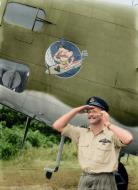
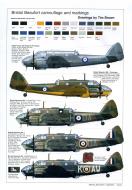
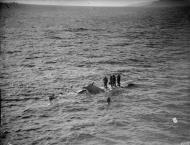
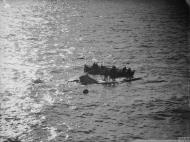
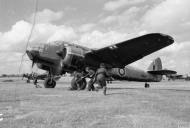


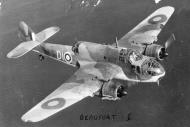

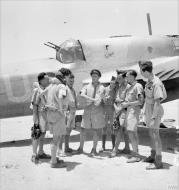
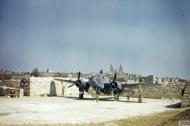
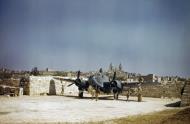
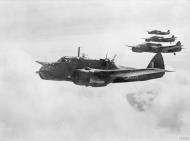
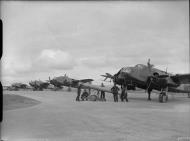
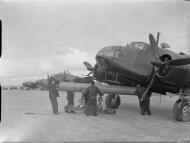
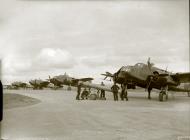
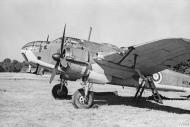

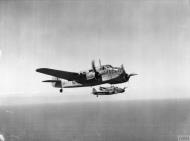
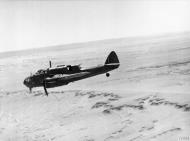
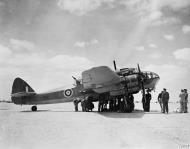
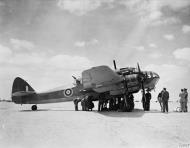

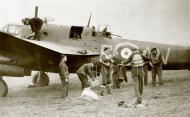
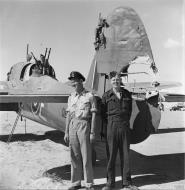
-L2-X8931-based-at-Chivenor-Devon-in-flight-over-the-sea-IWM-CH5963.jpg)
